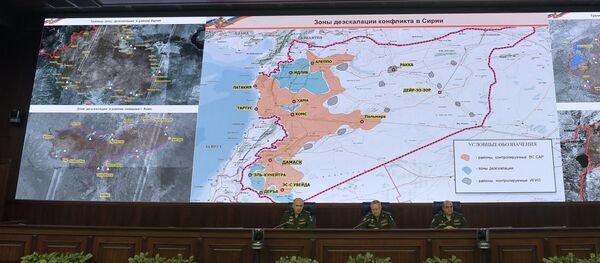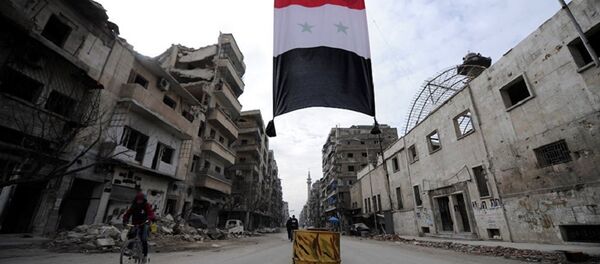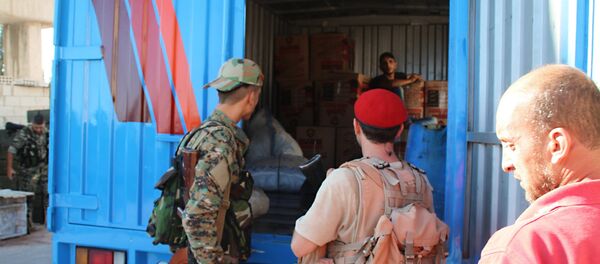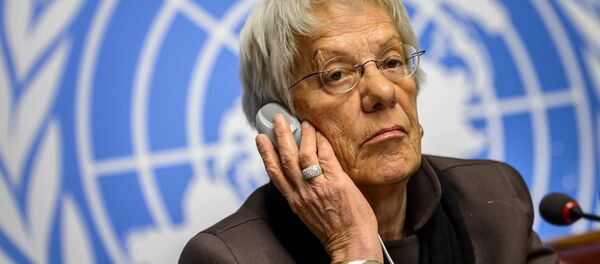Setting up de-escalation zones in Syria won't be enough to restore peace in the country. The next step should be the transformation of armed opposition units into political forces, Boris Dolgov, senior researcher at the Russian Academy of Sciences' Center for Arab and Islamic Studies, explained to Sputnik during the roundtable discussion on the negotiation process of the settlement of the Syrian conflict.
Elaborating on the next step, the transformation of the armed opposition units into political forces, Boris Dolgov said that Colombia could serve as an example of such a relationship: there was an armed group which had been fighting against the government for decades. However, it was then transformed into a political force, which is still active, he said.
The political analyst was apparently referring to the Revolutionary Armed Forces of Colombia (FARC) movement, which was until recently a guerilla movement and had been involved in the Colombian armed conflict since 1964.
Dolgov said that it would have been an "ideal" solution for Syria; however, it still has a long way to go.
"Besides, I think that US sanctions against Russia are a very important step aimed at confrontation with Moscow. Russia had quite a tough response at hand, however it prefers to act softly and flexibly in the international arena. These sanctions, as an unfriendly act, could have a certain negative affect on the situation in Syria. Hence any joint operation between Russia, Turkey and the US in Syria is out of the question, due to this particular reason, among others," Boris Dolgov concluded.
Meanwhile, on Wednesday, the Israeli newspaper Haaretz reported that Israel, Russia and the US had held several rounds of secret talks to discuss the ceasefire in southern Syria and the setup of de-escalation zones before the Russia-US agreement on the Syrian ceasefire was announced on July 7.
On August 3, Russia's Defense Ministry announced the setup of a third de-escalation zone in Syria, north of the battered city of Homs. The agreement was reached between the Ministry and Syria's so-called "moderate opposition" during the talks in Cairo on July 31 and will cover 84 settlements populated by more than 147,000 people.
The agreement on creating de-escalation zones in Syria was reached on May 4 at an international meeting in Astana between Russia, Iran and Turkey, the guarantors of Syria's nationwide ceasefire. There are plans to set up de-escalation zones in four areas: Idlib, north of Homs, in Eastern Ghouta immediately east of Damascus, and in the country’s south, including parts of Daraa and Quneitra provinces.
Following the results of a Russian-US meeting on the sidelines of the G20 summit in Hamburg on July 7, it was announced that the first de-escalation zone would be created in south-western Syria – in the area of Daraa, Quneitra and As-Suwayda. The memorandum on the establishment of this de-escalation zone was agreed upon by Russia, Jordan and the US. The ceasefire took effect on July 9.
Later in July, Russian Defense Ministry said agreements on the operation of the second de-escalation zone in Eastern Ghouta were signed following Egypt-mediated talks in Cairo between representatives of the ministry and the Syrian opposition. Syrian armed opposition group Jaysh al-Islam later confirmed the agreement, which envisaged a full ceasefire in the region. The Eastern Ghouta safe zone deal came into force on July 24.






